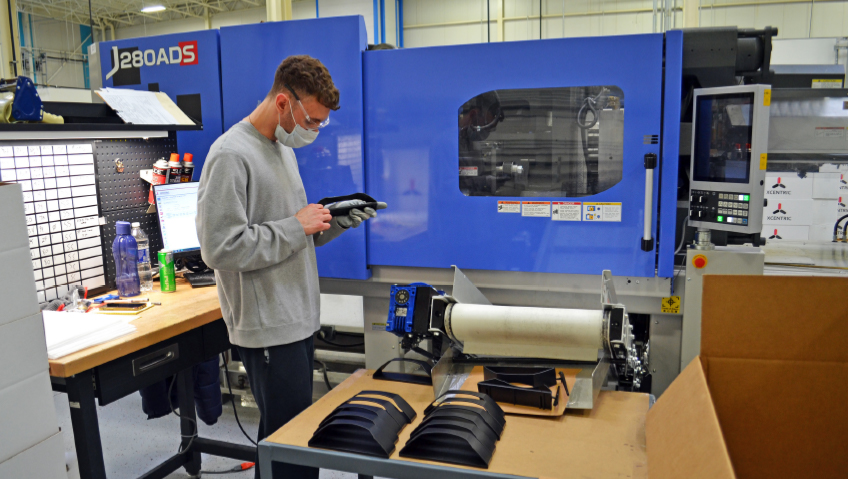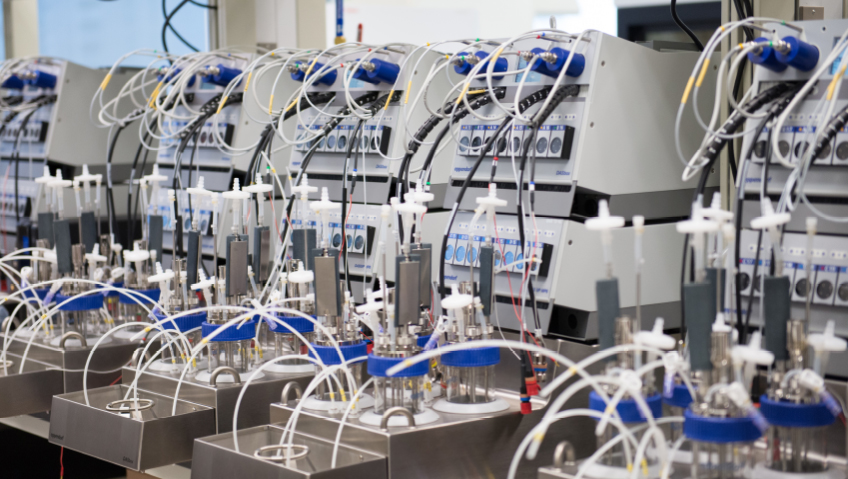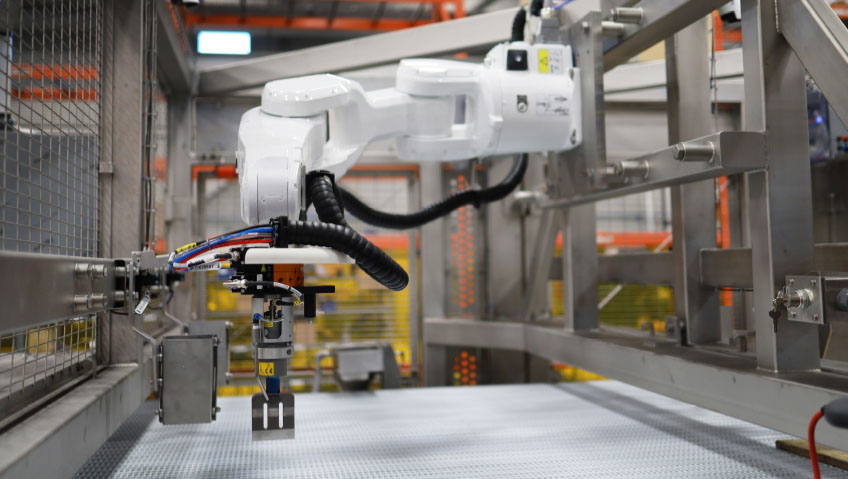It’s been more than a year since COVID-19 stepped on stage as the harbinger of a new normal, bringing a global shift toward working from home among other fundamental changes to our lives. But what will change, and what will “at work” mean for the future?
On March 11, 2020, the World Health Organization (WHO) declared the COVID-19 outbreak to be a pandemic. It was with some disbelief that the relatively few “remote workers” back then (did we even have a name for them?) witnessed the beginnings of an epoch that would see them joined in home-based industry by millions of citizens of every country.
Suddenly, workers of every kind were in the kitchen – their own – eating dry cereal straight from the box, vegging out in front of their computers in pajama bottoms, and, in Zoom attire, dressed for business from the waist up, the new office chic.
Even host-or-hostess pajamas were too elegant for the millions of people sobbing into their syrah over the sheer discomfort that lockdown and shelter-in-place regulations brought to their existence. But oddly, many well-seasoned remote workers felt a deep sense of gratitude (and possibly guilt) for being so strangely comfortable under this virtual house arrest.
A new take
For others, the time was an opportunity to reconsider how they do life, to work on themselves and their relationships with others, among several other noble pursuits like contributing to community-based programs in whatever permissible ways they could.
Reflective isolation aside, the big lockdown of 2020 brought with it major changes in how businesses run and how people are managed.
What stands out from every conversation I have had with directors and executives of a wide variety of businesses across North America in the past year is how well staff reorganized themselves. In terms of both how they work and when they work, people the world over have made a concerted attempt to adapt to the challenges presented by the international crisis.
And they’ve done this often to the (very great) surprise of their superiors – frequently without much practical help or counsel from those in the corner offices who usually, it is believed, are sources of business wisdom, or at least, craft and experience.
While many companies and their staff are getting on with business as usual now, for many others life may never return to its former normal at all. In some cases that may be a good thing. In others, perhaps not.
We have real sympathy for every single person adversely affected by COVID-19. We also have real gratitude for those frontline workers who were out there every day for us without the protection that we had simply by working from home. Today, however, the fact remains that businesses across North America have to rally to get the global economy back on its feet. How do we do that in the most efficient manner possible? What do we take away and what do we ditch? And how has managing staff changed over the past year?
Creative approach
Instead of making stern demands for staff to return to work pronto as some major financial institutions did in the media recently, most businesses appear to be taking more creative approaches to getting all hands back on deck. Several experts have shared their take on new metrics that track human productivity and how businesses can implement them. I was sent in search of this year’s choicest morsels in human resources wisdom to shed some light on how North America is managing people differently in 2021.
It didn’t take long to pick up the clear impression that a new status quo with regard to productivity is here to stay. “Remote work will now be the norm,” David Lewis, CEO of OperationsInc told Forbes earlier this year. “It is locked in as a result of COVID-19. Employers are best off accepting that fact and focusing on how to make it work for them, versus planning to revert back to pre-COVID ways,” he said.
One of the stand-out messages emanating from many different sources revolves around having more empathy for people; making a conscious effort to appreciate our work communities and networks more. When the chips are down, we are a whole lot more effective when we work together – whether virtually or on the front lines.
In this stressful time we’ve also learned to appreciate people for the fallible, vulnerable but also resilient and trustworthy human beings they are rather than mere cogs in the engine rooms (and board rooms) that keep companies, and the economy, running.
Healthy people, healthy business
As a result of this ‘great awakening’, employees’ physical and mental wellness has become imperative to the wellness and even the very survival of businesses rather than the “optional extra” it used to be viewed as, pre-COVID.
“Whereas my conversations about employee engagement and burnout prevention used to primarily be with HR executives, last year I had more conversations about our mental fitness programs with board members, CEOs and other executive leaders,” Elizabeth Sander, SHRM-SCP, HR consultant and CEO of Juliette Works in New York City said on shrm.org.
Better communication and transparency, as well as flexibility are also noted as big takeaways by Kathy Gurchiek in the same article. Training, adjusting to variables, digitalization, and the security of knowing what is expected were other lessons learned by human resources personnel.
“COVID-19 has reminded us of the dual imperatives of worker well-being and work transformation, but executives are still missing the importance of connecting the two. Organizations that integrate well-being into the design of work at the individual, team, and organizational levels will build a sustainable future where workers can feel and perform at their best,” Deloitte said in December 2020.
It is against this dappled backdrop of hope and challenge that the new metrics for gauging employee performance in a remote workforce are developing. For those working from home in high-engagement family scenarios, achieving something close to their office best was mostly challenging to start with.
But, as people adapt and become more adept at managing workflow in domestic environments, productivity seems to improve for many.
Setting and tracking new key performance indicators (KPIs) assist us in ensuring that how we work in this new world of digitized distancing evolves in the best and fairest way possible. People’s homes are, after all, their private sanctuaries and finding the fine line between effective management and intrusive management is therefore imperative.
Studies show that, in theory, the freedom and autonomy that comes from employees having more personal space to work in means they can be expected to reward managers with higher levels of innovation and creativity than ever before.
Trust – then double-check
Sending large groups of team members off in all directions of the wind suddenly became the ultimate test for how in touch managers were with their teams. In another sense, it also became a massive litmus for the quality of management methods and how confidently HR professionals could gauge the pulse of employee engagement over more than a year of dealing with remote working conditions.
Teams had to learn to trust one another on a whole new level and, in spaces where micro-management may have been an issue before, simply double-checking on progress while allowing people more space than usual became unavoidable.
It also became perfectly okay for parents, from PR consultants to CEOs, to halt video conferences while saving a kid from setting the kitchen alight.
Just as brevity is the soul of wit, it also appears to be the secret to successful employee engagement surveys. Experts note that one of the best ways to ascertain whether and how well staff is coping is to ask them, straight up. By designing succinct, well-thought-out questionnaires that are answered anonymously, firms like Nerdery and many others have positively transformed employee job satisfaction and, as a result, productivity, by genuinely building their interventions on people’s feedback.
To help us measure how happy our workforces are, hrforecast.com generously offers a way of setting up four concise questions for such surveys. Answers can range from #1, classed as a “positively yes”, escalating to “neutral” across #2,#3, and #4, ending with a “positively no” placed at #5.
It suggests that a couple of questions should revolve around the level of commitment employees feel and the pride that they have for the organization and how that feeling affects their motivation.
Two more questions should touch on how likely they are to remain with the company for any amount of time as well as how likely they are to recommend the company as a preferred employer to others.
To calculate the overall engagement value, isolate the number of all “positively yes” responses from all “neutral” and all “positively no” responses. The latter group provides the percentage of low to no engagement folks.
Planning the unknown
Planning an entire organization’s work distribution more effectively becomes especially important when considering that studies show that people typically apply their time sovereignty (as it is referred to by the International Labour Organisation) a lot more generously when working from home, resulting in much longer working hours than had they been at the office.
It would appear that time which would have been spent traveling to work becomes work time at home, as do big chunks of evenings and weekends. It also appears that without sufficient structure, staff working from home run the risk of allowing life to turn into one large gray zone in which mostly only work happens.
This is, naturally, not a good thing. Long-term, people lose touch with their playful selves and the activities and loved ones that light them up. This in turn leads to lower creativity and employee engagement. All work and no play takes the shine off both Jill and Jack.
Communication clear-up
Keeping tabs on one another, mostly via the telephone, smart applications, or video calls, has been a feature of these restricted times, but now newly-developed software – mainly in the form of next-generation dashboards that track and trace projects remotely – has proven invaluable in providing hard data on real-time performance metrics as well as on how successfully teams communicate.
Experts believe that this new level of transparency will allow companies to actively improve their remote-working game, as they continuously work to narrow the gap between assessing performance and developing structures that support optimum delivery.
Erik van Vulpen, someone who thinks about such things as HR and technology and founder of the Academy to Innovate HR (AIHR), had this to say in an article on the measurement of performance: “Most companies try to [establish metrics] by asking managers and colleagues to review people’s performance, in a 180 or 360-degree feedback loop. And we think that’s the way to go. The best metric is a combination of different qualitative and quantitative employee performance metrics, done by multiple people.”
AIHR prides itself on ‘future-proofing the evolution of HR’, making it a contributor to watch as the world settles into new ways of working.
As we’ve seen, there are several valuable takeaways that can help managers navigate these uncertain times. Firstly, experience has taught us to never underestimate the tenacity, creativity, and sheer power of goodness that exists in a well-respected workforce that feels understood and appreciated.
From this perspective, perhaps COVID-19 is the unexpected answer that we needed to speed up workplace transformation of somewhat outdated human resource-management models. Most importantly, we now know that supporting all team members in doing the awesome stuff that we all need to remain quintessentially thriving human beings, might not be such a bad idea after all.






